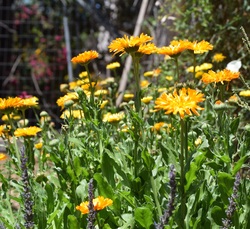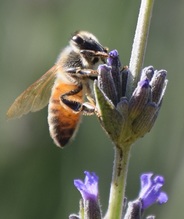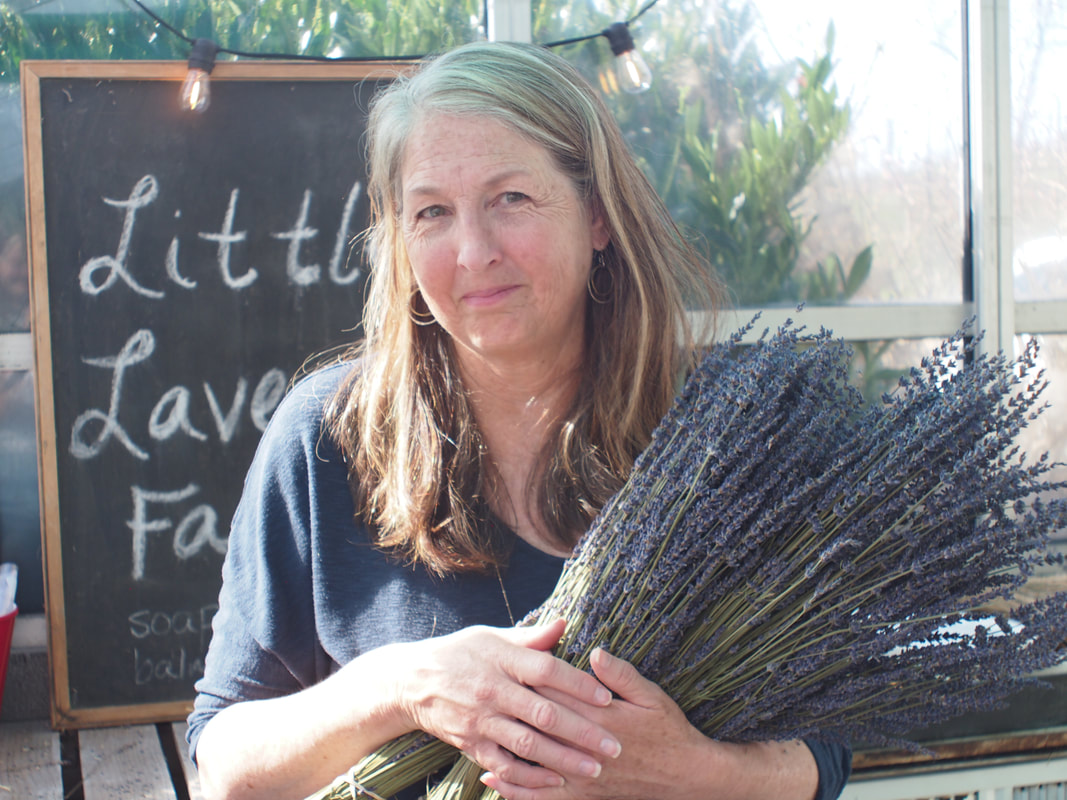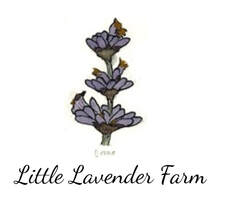 I am growing Calendula in my herb garden for the first time this year -- and what a shame that I’ve lived so many summers without growing this beauty! Not only is it a pretty flower (which sits in little vases and brightens up my kitchen), but it also self-sows and blooms as fast as I can pick it. But that’s not all. One of its many names is the “poets marigold” because of two features: 1) It opens its petals at about 9:00 each morning, slowly follows the sun throughout the day, and then closes up shop at about 3:00 each afternoon. 2) During the night, droplets of water will often gather in the flower and then drop off of its petals when it opens in the morning. Who wouldn’t want to write about a weeping flower/loyal sun-worshipper?! And there’s more. The Calendula is incredibly healing -- its petals are edible and contain all kinds of healthy properties, with The Herb Society of America noting that it is a probable cancer preventative food since it contains carotenoids, lycopine, and lutein. And it’s versatile: the leaves can be boiled and eaten like spinach, the buds can be pickled and used like capers, fresh petals can be tossed into a salad, and the dried petals can act as a saffron substitute, as well as flavor broth and color cheese. I for one, am looking forward to creating a Calendula infused oil and then using that infusion in salves and soaps -- since it’s also an anti-inflammatory and an astringent used to heal bruises, burns, and cuts. I imagine a Caledula/Lavender soap would be amazing! I think this little flower is going to keep me very busy in the next few weeks! *Thanks to my sister Stephanie for the title!
0 Comments
 It’s always an eventful day when Hilary Kearney, the Girl Next Door beekeeper comes to visit. Yesterday was no exception. A few weeks ago, her boyfriend Tim had stopped by to check on the bees and noticed that one of the hives had lost its queen. Now this can happen for a few different reasons -- maybe she died, maybe they swarmed. There was no way to know in this case. But Tim spent some time transferring some of the brood from the "queenright" hive to the queenless hive in hopes that this hive would make a new queen. How might they do that, you ask? I wondered that as well, so I researched a bit by reading both Hilary’s blog and several other resources. This is what I learned: 1) Once the bees recognize that a new queen is needed, several of the fertilized eggs are chosen to become a potential queen and their cells are extended downward by worker bees in order to make them bigger. 2) These potential queens are fed a special concoction of royal jelly (all bee larvae are fed royal jelly for the first three days but potential queens continue on this diet). 3) After they’ve been fed a bunch of the royal jelly and about nine days after laying, the potential queens are sealed in their cell with layer of wax 4) About a week after that, the first queen will emerge (let’s call her Cercei), and using her special, non-barbed stinger, she will slay her queen sisters before they can emerge from their cells by piercing through their wax cells. 5) If, by chance, another queen emerges at the same time, they will duel to the death. 6) Queen Cercei will then begin the mating process, take several mating flights with several male drones (if you think about it, these could be her brothers), who die after they mate. 7) Soon after mating, the queen will start laying eggs -- up to 1500 per day With all of this drama going on down in the hives, you can imagine how anxious I was to find out how things were progressing. WAS there a new queen? Was there a royal murder? Was there all kinds of bee sex going on in my backyard? Were babies being produced? Would the queendom survive? |
Categories
All
Archives
May 2022
AuthorHello! My name is Pam Reynolds Baker and I am a mom/wife, writer, and lavender farmer who lives in Dundee Oregon . |
- Home
-
Lavender 101
- Our Lavender
- A Brief History of Lavender
- The Many Uses of Lavender Essential Oil
- Choosing the Best Essential Oil for You
- What is Hydrosol anyway?
- Lavender and Anxiety
- Lavender and Weddings
- A Lavender Home
- Lavender and Soil Amendment
- Growing Lavender in Containers
- When to harvest lavender
- Cleaning Lavender Buds
- Pruning
- Shop
- Recipes
- Writing
- Lavender Crafts
- Gallery
- About Us
- Press
- Privacy Policy
 RSS Feed
RSS Feed




